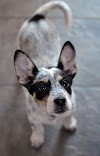Romagnola cattle are a special breed noted for their exceptional qualities and services to the livestock sector. They are named after the Romagna area in Italy.
Romagnola cattle have a long history that may be traced back to early Italian cattle breeds. Their sturdy construction and stamina made them ideal as work animals in the agricultural industry. Their morphological and behavioral characteristics improved over time as a result of selective breeding.
The Romagnola has black pigmented skin all over, such as the muzzle, horn tips, hooves, and tail switch, and is ivory to light grey in color. They have horns that are lyre-shaped in cows and half-moon-shaped in bulls, which is a distinguishing feature. Their coloring aids them in hot climates, and in the winter, they develop thick coats.

The bulls of the Romagnola breed, which weigh about 1250 kg, and the cows, 750 kg, respectively, exhibit remarkable signs of thickness and muscularity.
Romagnola Cattle have multiple advantages and a few disadvantages which include:
Pros
Health and Strong Genetics
The strong genetics of Romagnola cattle are renowned for their general hardiness and disease resistance. Farmers will benefit greatly from this because it will lower their risk of health problems and their requirement for ongoing veterinarian treatment.
Feed Conversion Efficiency
The effective feed conversion rate of Romagnola cattle is one of their distinguishing characteristics. These cattle are excellent at turning feed into muscle, which makes them an excellent choice for meat production. Over time, this efficiency may result in reduced feed costs.
Production of Premium Meat
The meat quality of Romagnola cattle is exceptional. Their meat is valued for its great flavor, softness, and leanness. Because of this, people who appreciate high-quality beef products frequently choose them.
Climate Adaptation
Romagnola cattle have a remarkable capacity for climatic adaptation. These cattle can grow and reproduce successfully in either a hot and damp environment or a colder area, making them a flexible option for farmers in different geographical areas.
Cons
Behavior Issue
Romagnola cattle are renowned for their size, power, and aggressive tendencies, particularly in unfamiliar or hazardous circumstances. This temperament can be difficult to handle and manage, necessitating extra care and knowledge.
Challenges in Calving
Romagnola cattle may experience difficulty giving birth to calves because of their big size. Increased dystocia rates may result from this, which may have an effect on the health of the cow and the calf. To guarantee a favorable outcome, proper care and monitoring are essential during calving.
Requirements for management
Due to their size and distinctive traits, Romagnola cattle require specific management techniques. These cattle require specific handling and feeding, so farmers must be prepared.
Price
The fact that Romagnola cattle are difficult to breed and can be pricey to purchase from qualified breeders is one of their drawbacks.









0 Comments